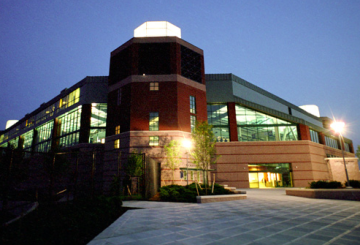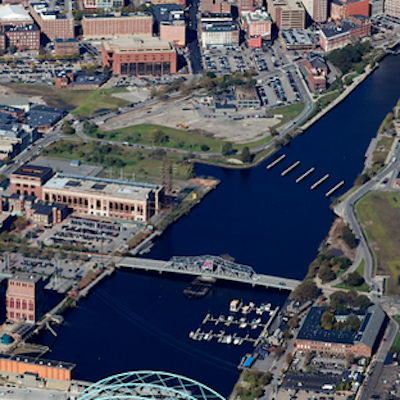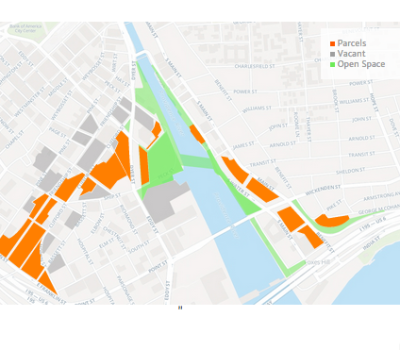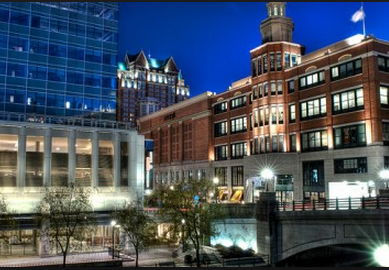PawSox Consultants Overestimated URI Ryan Center Attendance by Millions
Friday, April 17, 2015
The consulting group hired by the new ownership group of the Pawtucket Red Sox was the same one retained by the state to conduct the business plan for the University of Rhode Island's Ryan Center in 2000 -- and furnished attendance projections for the Center which proved to be overinflated by nearly 30% over the course of its first ten years.
According to the business plan report obtained by GoLocalProv, attendance projections for the first decade of the Ryan Center by consultants Brailsford and Dunlavey (B&D) were more than a million attendees over what the school saw for actual numbers during that time frame - and subsequently more moving forward.
In 2000, B&D deemed in their economic impact report that for the first ten years of the Ryan Center's operations (2002 - 2012) that attendance for URI basketball, as well as other college athletics, concerts, and community events at the venue, would exceed three million visitors.
GET THE LATEST BREAKING NEWS HERE -- SIGN UP FOR GOLOCAL FREE DAILY EBLASTThe Ryan Center's management firm, Global Spectrum Ventures, touted in a report for the first decade that the Ryan Center welcomed over two million visitors -- a number confirmed by school officials.
A spokesperson for URI said that in recent years, total annual attendance for the center totaled just over 250,000 visitors -- not the 314,000 annual number predicted in the 2000 B&D report that they said would be reached annually by 2004 following initial years of attendance numbers of 271,000 and 285,000 in 2002 and 2003.
"The Ryan Center hosts on average more than 80 full arena events each year. In addition to the full arena events, more than 100 meetings, receptions and banquets are held for local businesses, schools, other outside entities and numerous University departments," said URI spokeswoman Linda Acciardo. "In total, over 250,000 people walk through the Ryan Center doors annually."
Holy Cross economics professor Victor Matheson, who specializes in sports economics, offered his perspective on the role of consultants' projections.
"In general, consultant reports tend to be wildly optimistic -- especially in cases when you have a report done by the team themselves," said Matheson. "They have no reason to provide worst case scenarios. Always take them with a grain of salt."
Numbers in Question
The comparison of projections comes following the economic analysis report unveiled by B&D this week for the purported economic impact of moving the Pawtucket Red Sox to Providence.
In 2000, B&D had been retained by the state -- for a cost of $100,000 - to provide a business plan for a multi-use facility on the URI campus, to host home basketball games, as well as other sporting, scholastic, and community events
The 7,500+ seat Ryan Center was constructed in 2002 along with the adjacent Boss Ice Arena, for a $54 million project. According to URI, it currently supports its own operations.
"The Ryan Center is an auxiliary enterprise, which means it must support its own operating, utilities and debt service without state dollars. Revenue consists of Student Fees, Event Revenue, Advertising & Sponsorships," said Acciardo. "The Athletics Department budget pays its related expenses for ticketing and other out of pocket as incurred."
The report issued by B&D for moving the Pawtucket Red Sox to Providence calls for subsidies of $4 million annually in tax breaks to the ownership group for the projected $85 million project -- and issues no projections for possible attendance, whether based off of the roughly seventy home game minor league baseball season, or if it takes into account potential concerts, events, or other sporting opportunities broached at the press conference, which included football and lacrosse.
The B&D Providence stadium report does however list a predicted $12.3 million in annual economic impact, and references for numbers a 7,500 seat ball field that can accommodate up to 10,000 spectators and has the capacity with auxiliary seating to host up to 12,500 seats in the event of football. (The report shows the recent decline in attendance at McCoy stadium in recent years, from an average game attendance of 9,561 in 2005, to 7,367 in 2014).
Matheson was not optimistic on the possibility of football, given the past -- and recent -- history of mixed-use stadiums.
"I would say that most of these studies are wildly optimistic about the use of non-baseball events," said Matheson. "A baseball stadium is pretty much designed to do one thing well, and doesn't do most of the others nearly as well. These are particularly bad places to play these things. There are reasons that football teams who have played in a baseball stadium try not to do so. The new MLS team in New York is playing at Yankee stadium, which is fine -- but not at all ideal for them. It's a terrible idea because you put the 'best' seats in the corner of the soccer field, or the football field. That's why baseball has all but moved out of multi-use stadiums."
Projections, Reality
While any projected attendance numbers for the Providence stadium remain unclear, a further look at the URI numbers show that there might be additional redundancies in counting attendance as it stands.
According to B&D's report for the Ryan Center, starting in 2002 and continuing to present, the men’s basketball team was projected to realize average yearly attendance of 86,000 and the women’s team 23,000 per annum.
For basketball alone, the B&D report was significantly over inflated. In some years, men’s basketball has been 25% below average and women’s basketball has been been just 75% below the projections. And for some games, the attendance for men’s and women’s double headers were double counted in the URI official attendance reports.
"It's fairly rare when you hire a consulting firm to look back at past reports," said Matheson. "It's common in academia, however, for us to go back and look at outcomes, such as increases in employment, taxable sales, and to see whether building the stadium did increase economic impact. As a rule of thumb, when economists go back and look at consulting reports -- take whatever the team is telling you in dollars, move the decimal one over to the left, and that's closer to the reality."
Related Slideshow: The Ten Biggest Questions Facing the PawSox Coming to Providence
If the new ownership of the Pawtucket Red Sox want to build a new stadium in Providence, a number of questions need to be answered. The potential for a major contruction project in the state's capitial city touches upon a number of issues, from money, to politics, to jobs, and development.
Related Articles
- Leaders Make the Case for PawSox to Stay in Pawtucket
- REPORT: PawSox To Be Sold To Some Red Sox Owners
- Russ Moore: Raimondo’s First Test, Keep The Pawsox in RI
- NEW: City Council President Aponte “Excited” at Prospect of PawSox Coming to Providence
- PawSox Rewarded for Community Service
- PawSox Win Championship
- Pawsox manager DiSarcina heads to the majors
- Pawsox name Boles new manager
- PawSox Send Ranaudo, Vasquez to All-Star Game
- Pawtucket Mayor Says PawSox Move is “Devastating”
- Jencunas: Providence PawSox Stadium - Boon or Bust?
- David Brussat, Dr. Downtown: The Red Sox and the PawSox
- Moore: Will PawSox Move be a Sweetheart, Insider Deal?
- The Ten Biggest Questions Facing the PawSox Coming to Providence
- PawSox Consultants Overestimated URI Ryan Center Attendance by Millions
- New Owners Don’t Rule Out Public Funding For New Providence PawSox Stadium
- Providence PawSox Proposal Asking For Greater Public Support
- PawSox Name Flemming New Radio Play-by-Play Man
- RI Biz Winners and Flops - The PawSox Distraction
- EXCLUSIVE: PawSox Consultant’s Findings in Other Cities Often Very Rosy
- PawSox Ask for More Than $100 Million in State and Local Aid
- RI GOP: $450 Million Spent on Convention Center Red Flag for PawSox Deal
- City Councilors Make Pitch for PawSox to Come to Worcester
- NEW: PawSox Name Josh Maurer as New Radio Voice for 2014

























